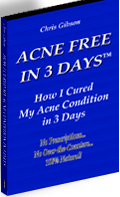 |
|
What You Should Know about Retin-A Treatments for Acne.
About acne: Acne vulgaris is caused by a hormone imbalance that increases the body's normal level of the male hormone called androgen. This increased androgen will cause the sebaceous glands in your skin (the glands that produce your natural skin oils) to get bigger and create more skin oil (called sebum). That increased level of sebum can combine with the thousands of dead skin cells that we slough off every minute of our lives and block your hair follicles. Blocked follicles create the perfect environment for a bacteria called P.acnes to go to work and cause an inflammation and a breakout of acne blemishes. (That P.acnes bacteria, by the way, is a natural bacteria that is always present in your skin -- even the healthiest skin.) Acne blemishes are seen most often in adolescents but adults are not immune. Acne blemishes are known as comedones which are large, deep, pus-filled pimples. These comedones go away eventually but will usually leave a scar behind -- that's where Retin-A comes in. Retin-A can significantly reduce the severity of this scarring by making it easier for the body to shed the dead skin that blocks pores -- this reduced blockage reduces the size of comedones and results in less scarring. Using Retin-A: At bedtime, use a gauze pad or cotton swab to apply a thin layer of Retin-A to the areas of your skin that have acne blemishes. Wash your hands immediately after applying the medication. Don't apply Retin-A near the eyes or mouth or on open cuts; Retin-A can irritate sensitive skin. Always use acne medication, and all medications, according to the label directions. Retin-A should only be used once a day, using it more frequently than directed or using more than necessary will not make it work better and may have negative consequences: increasing the possibility of side-effects. Remember, even over-the-counter treatments are medications and should be used carefully. It takes time to start working: When you first start using Retin-A your acne may SEEM to get worse, but don't stop using it -- it may take up to six weeks before the medicine is working to its full potential. Cosmetics and Retin-A! Cosmetics may be used while using Retin-A but be sure to remove all cosmetic products completely before applying Retin-A. Pregnancy and Retin-A: Retin-A is a topical medication (applied to the skin) and, when used as directed, less than 10% of the medication will pass into the mother's bloodstream and less than that will reach the baby. More than 10% may get into the bloodstream if the Retin-A is applied to cuts on the skin or breaks in the skin or if more than just the recommended thin coating is used; the less used, the less risk there will be to the baby. There has been no proven link between the use of Retin-A during pregnancy and birth defects and it is unknown how much, if any of the Retin-A will wind up in breast milk, it may be wise to either switch to an acne product without Retin-A or use the Retin-A medication very sparingly and then only with your doctor's approval. About the author of: What You Should Know about Retin-A Treatments for Acne Thomas Hunter is an Internet marketer, author and publisher and has helped hundreds of people become successful Niche Marketers. Explore the highly profitable world of Niche Marketing at http://SixFigureNiches.com our popular website. Article Source: http://netsalesinc.com If you have a website or ezine you may freely post this article on your site as long as you include the full resource box above. All links must be active / clickable with no syntax changes.
| |
